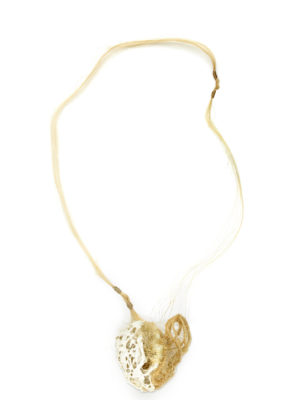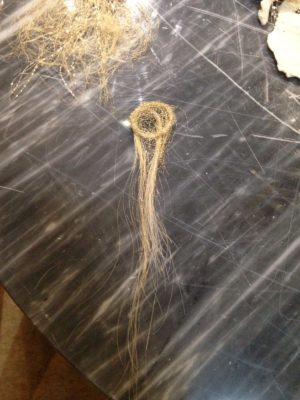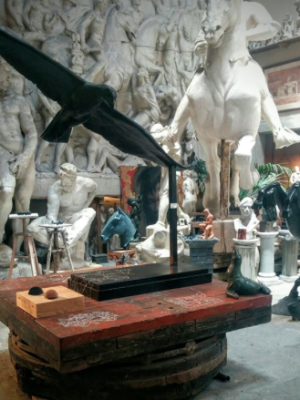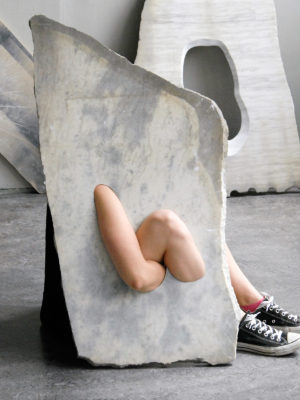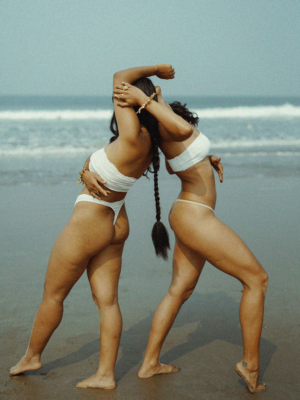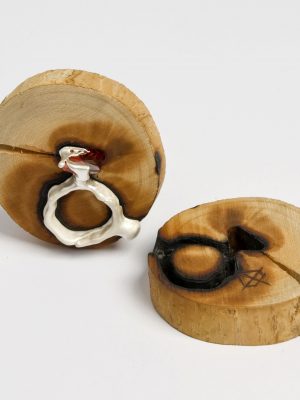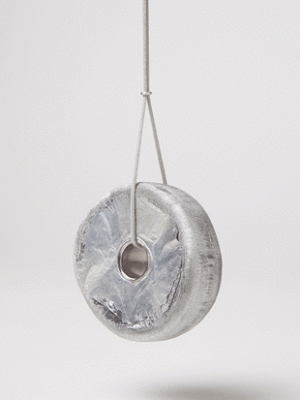Alchimia was happy to present BODIES AND MINDS, a group exhibition featuring the work of its recent MFA graduates, choreographed as a conversation between contemporary jewellery and the sculptures and fascinating spaces of the historical Galleria Romanelli. BODIES AND MINDS wants to incite a reflection on the hybrid nature of the contemporary artistic jewel, on the relationship between the body and the mind, on the constraints determined by physical prerequisites vis-à-vis conceptual investigations, between the weight of tradition and the fragility of innovation. In 1829 the sculptor Lorenzo Bartolini transforms an abandoned fourteenth century church in a studio where his student Pasquale Romanelli, followed by five generations of male heirs, develops the Romanelli Gallery. Hundred-eighty-seven years later six female jewellery artists take over the space and its collection challenging disciplinary and gender hierarchies. BODIES AND MINDS offers unexpected connections and ironic cultural appropriations, in a path that relates illustrious examples of copies and originals from the history of Italian sculpture to the experimental relational dimension of contemporary jewellery.
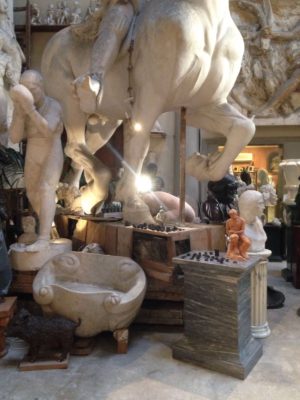
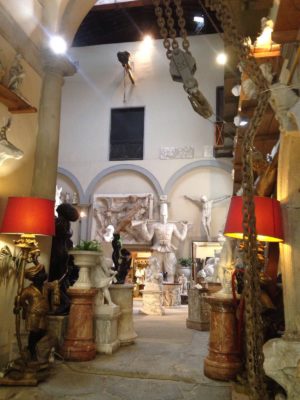
Daria Borovkova, Being and Belonging, 2016
The research of Daria Borovkova (born in Moscow in 1984) focuses on socio-cultural aspects that define contemporary human identity: the need for mobility and its implications, such as the impossibility to create long-term and rooted relations with a territory and its cultural fabric, but also the more hybrid and less nationalistic identity that emerges out of this equation. Through her jewels Borovkova experiments with unconventional alloys and a very personal artistic process in which several and variously precious metals are first melted, then rolled in very thin layers and finally shaped until they become rings or bracelets, each with very unique proportions, nuances and forms, yet part of a manifestly homogeneous crowd. Metaphor of the construction of the subject both as an individual and as part of a community, Being and Belonging speaks of how the formation of an identity is a manufactured process in continuous, and partly unpredictable, transformation.
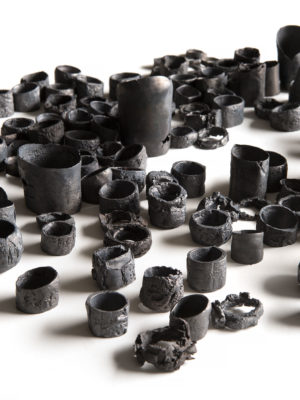
Sana Khalil, In Conflict. Moments of Strike, 2014-2016
The practice of Sana Khalil (born in Beirut in 1985) emerges from existential questions relating to the feeling of static helplessness of the individual in relation to the wider political and social context that surrounds him. Her work is strongly influenced by the history of her country, Lebanon, and her role as an artist and as a citizen within contexts of war and on-going unrest. The series In Conflict. Moments of Strike consists of a collection of brooches and wooden spheres that Khalil has hammered and tried to scratch for many months, without being able to produce any major difference to their structure, while visibly defiling their surface. The continuous and programmatic repetition of the same gestures are deemed to fail as they have no agency on infrastructures, while only influencing surfaces. Differently, her brooches are semi-spherical elements that appear as a battered matter, which yet results as sadistically seductive. An omen to the double nature of beauty, and its controversial meanings and, more importantly, as in Khalil’s words, the representation of fear, pain and vulnerability.
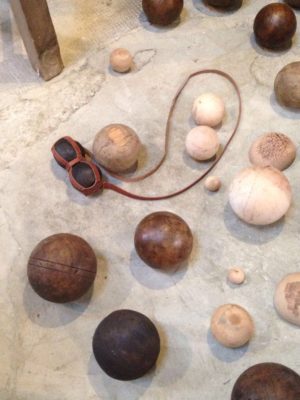
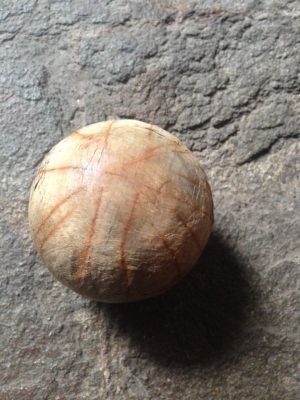
Lavinia Rossetti , Madeleine, 2016
Lavinia Rossetti (born in Pisa in 1985) deals with the whirlwind of feelings and emotions that characterize the human psyche and physicality. Madeleine is a series of highly poetic and nostalgic works, referring to the famous French dessert that Marcel Proust uses as a metaphor for the notion of involuntary memory in À la recherche du temps perdu. Brooches and necklaces are characterized by the recurrence of the oval shape, direct reference to the traditional technique of inlaid wood and to the pendants containing images of beloved ones in vogue since the XVIII century. Within a strong and wide sense of openness of meanings and subjective takes to the pieces, Madeleine becomes a metaphor of the layered and impermanent substance of our memory and how this is shaped through the proximity to the body, the mind and the heart.
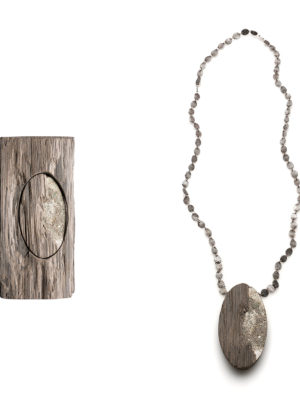
Giulia Savino , 1 : 20,000, 2015 – 2016
Precariousness and mobility are two of the main stereotypical aspects that affect the lives of the new Western generations, often characterized by uncertainty, the knowledge of different languages, the ability to have a light luggage and to be a fast and multi-tasking person. With the series 1:20,000 Giulia Savino (born in Vercelli in 1987), a traveller and adventurer herself, with an important working experience in Egypt, has created necklaces and earrings that respond to these very contemporary needs: seducing and light objects, bearing a featherweight, taking up very little space and adaptable to different contexts . These works represent personal interpretations of cities from above or known only through maps: Amsterdam, Florence, Paris , Barcelona and her native Vercelli . They become cities to own, wear, appropriate and interpret.
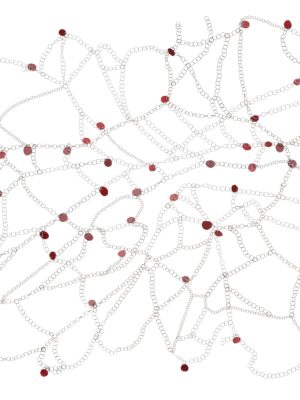
Federica Sala, True Lies. A Collection of Oxymorons, 2015-2016
The practice of Federica Sala (born in Milan in 1986) is based on the analysis of the physical properties of different materials to experiment new and unpredictable formal possibilities. Her works have a particularly complex formal outcome, where sophisticated techniques are associated with a substantial theoretical research, and the physical and chemical characteristics of the materials are lined to existential questions on the human nature. In the series True Lies. A Collection of Oxymorons, glass and stones come together in an innovative dialogue result of a long research developed on the island of Murano, with a strong relationship to local crafters. These works encourage a reflection on the inextricable co-dependence between opposite forces and forms, and on the limits of our visual and intellectual perception. Seemingly impossible structures that emphasize how much what we intuitively call reality is a fragile, hybrid and complex system, despite the appearances.
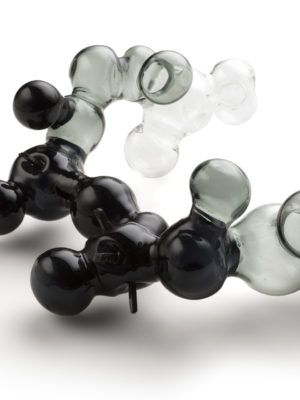
Maria Ignacia Walker, Trascendieron, 2015
The work by Maria Ignacia Walker (born in Santiago de Chile in 1984) follows an obsession with the human body and its past and present rituals that define and outline daily actions, even when involuntarily. Her jewels are performative works, where the observer or the wearer is called to perform an action, to use them in order to understand them. Trascendieron is conceived as a tribute to the
silent and trivial losses that we inadvertently witness every day. Some hair got caught in forms of gold and porcelain within a collection that encourages a reflection on the human impulse to collect and preserve, bringing both of these aspects to their extreme. They are counted, measured, analyzed and meticulously preserved as if they were rare and precious materials, in an ironic and poetic act that questions the parameters used to quantify the value of things. On the same evening Alchimia presents at its premises Wonder/Wander, a group show with jewellery by Anna Okamoto Gayton, Dana AL-Nafisi, Diana Pantea, Lena Kosztyucsenko, Sehnaz Erdal, all international graduating students of its BFA prgram.
